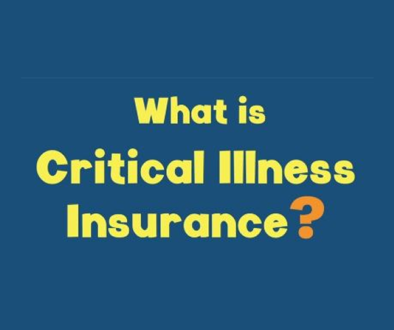Even the Strong Need Disability Insurance
Don’t be fooled, it takes one missed step off the curb and you could be out of work for 6 months. Who is going to help pay your bills?
Quick quiz: What’s the most valuable financial asset you own as a young professional and a provider for your family? Here are some hints: It’s not your home. It’s not your 401(k). And it’s definitely not your car.
The answer? It’s your future income. The money you earn in the years to come will allow you to pay your bills, save for the future, and create a secure financial foundation for you and your family.
Really, all the plans you’re making both for today and the future rely on the assumption that you’ll continue earning money. Which is exactly why it’s so important to protect that income and make sure you receive it no matter what.
That’s where disability insurance comes in.
Disability insurance ensures that you’re able to continue paying your bills and putting food on the table even if your health prevents you from working for an extended period of time. By sending you a monthly check that replaces some or all of your income, it protects your biggest financial asset from those worst-case scenarios.
It’s something that just about every working parent should have, but it’s a complicated product that can be difficult to understand and get right.
Why You Need Disability Insurance
Disability insurance is often ignored both because the prospect of becoming disabled seems remote and because the premiums can be hard to swallow, especially for young families who are already struggling to pay for child care and all the other expenses that come with having young kids.
But extended disability is a lot more common than most people think. According to WebMD, your odds of becoming disabled before you retire are about 1 in 3.
The leading causes of disability include:
- Arthritis
- Back pain
- Heart disease
- Cancer
- Depression
- Diabetes
For the most part it’s chronic illness that causes disability, not the kind of major accident that typically comes to mind. And the odds of it happening before you’re financially independent are fairly high, though there are some situations in which your personal odds may be lower.
So the big question is this: If you’re one of the 33% of people who faces an extended disability, where would the money come from to pay your bills and put food on the table? How long would your savings be able to support you, and what would you do if you needed help past that point?
Most people would struggle to make it more than a few months, which is exactly why disability insurance is so valuable. By replacing your income for potentially years at a time, it ensures that you’ll be able to continue taking care of your family no matter what.
Short-term disability insurance vs. long-term disability insurance
There are two main types of disability insurance: short-term and long-term.
Both can be helpful, but they play very different roles in your financial plan. Here’s an overview of each.
Short-Term Disability Insurance
Short-term disability insurance only offers benefits for a relatively limited amount of time. Most short-term disability insurance policies cover you for 3-6 months, though they can provide coverage for up to two years.
There is typically a waiting period of up to 14 days before the insurance kicks in to prevent it from covering minor illness and injury. After that waiting period, it will typically start to pay 50%-100% of your regular income until you either return to work or your coverage period ends.
One of the most common uses of short-term disability insurance is during maternity leave. Many, though not all, short-term disability policies cover the latter parts of pregnancy and the period after childbirth, which can help replace your income while staying home with your newborn.
Most short-term disability insurance policies are offered as an employer benefit, and in some cases that coverage may even be free. Private coverage is also an option if you aren’t able to get coverage through work, though those policies can be expensive. For example, a healthy 38-year-old male might pay a $2,300 annual premium for a $5,000 monthly benefit and 12 months of coverage.
One alternative to short-term disability insurance is building an emergency fund. A 3-6 month emergency fund would provide the same protection as a 3-6 month short-term disability insurance policy, with the added benefit of not having a monthly premium.
Long-Term Disability Insurance
Long-term disability insurance is where you typically find the most value. Because while a short-term disability could be covered by a healthy emergency fund, an extended disability is much more likely to deplete your family’s savings and put you in a difficult position unless you have some way of replacing your lost income.
Long-term disability insurance picks up where your emergency fund or short-term disability insurance leaves off. There’s typically a 3-6 month waiting period during which you would have to replace your income by other means.
But once you’re past that waiting period, your long-term disability insurance would start replacing your monthly income and would continue to do so for years at a time, as long as you remain disabled.
This is a big potential benefit. A long-term disability policy that replaces $5,000 per month in income will potentially pay you $60,000 per year for as long as you’re disable. That would go a long way toward keeping your family on the right track.
Given that potential value, it’s usually more important for families to secure long-term disability insurance than short-term disability insurance. For that reason, the rest of this guide will focus primarily on long-term disability insurance.
Article Credits: Magnify Money
Author Credits: Matt backer



